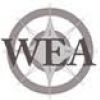Why do regions differ in vulnerability to СOVID-19? Spatial nonlinear modeling of social and economic patterns
Vol. 13, No 4, 2020
|
Olha Kuzmenko
Sumy State University, Sumy, Ukraine E-mail: o.kuzmenko@uabs.sumdu.edu.ua ORCID 0000-0001-8575-5725 |
Why do regions differ in vulnerability to СOVID-19? Spatial nonlinear modeling of social and economic patterns |
|
Tetyana Vasylieva
Sumy State University, Sumy, Ukraine E-mail: tavasilyeva@fem.sumdu.edu.ua ORCID 0000-0003-0635-7978 Sergej Vojtovič
Alexander Dubcek University of Trencin, Trencin, Slovakia E-mail: sergej.vojtovic@tnuni.sk Olena Chygryn
Sumy State University, Sumy, Ukraine E-mail: o.chygryn@econ.sumdu.edu.ua ORCID 0000-0002-4007-3728 Vytautas Snieška
Kaunas University of Technology, Lithuania vytautas.snieska@ktu.lt ORCID 0000-0001-8777-273X
|
Abstract. Certain groups of determinants (economic, environmental, social, healthcare) with the highest vulnerability identify the reasons for regional differentiation in morbidity and mortality from COVID-19. This defines the necessity to find appropriate combinations of factors characterizing the vulnerability of a region. The methodology and tools to explain the regional specifics of population vulnerability to COVID-19 are investigated through a systematic consideration of many public health factors, environmental, social and economic specific nature of regions. The aim of the article is to study the reasons for regional differentiation of population vulnerability (morbidity and mortality rates) from COVID-19. The authors investigate a nonlinear spatial model in which the stepwise algorithm of individual factor variables is added/removed from the model specifications step by step by the Aitken method depending on their correlation with morbidity and mortality from COVID-19 in the region. The Farrar-Glober method is used to eliminate the multicollinearity of factors, the Spearman test is used to detect the heteroskedastic effect, and the Darbin-Watson test is used to check the presence of autocorrelation between the residues. As a result, the specification of the model with the highest adequacy in terms of p-value and t-statistics is formed. Relevant socioecological-economic vulnerability indices of regions to mortality and morbidity from COVID-19 are identified. The obtained results allow making adjustments in the state and regional programs concerning the mobilization of economic and healthcare systems. |
|
Received: April, 2020 1st Revision: October, 2020 Accepted: December, 2020 |
|
|
DOI: 10.14254/2071-789X.2020/13-4/20 |
|
|
JEL Classification: С21, С51, C 31, C12, I15, I18, R58, R11 |
Keywords: COVID-19, vulnerability, modelling, public health |













